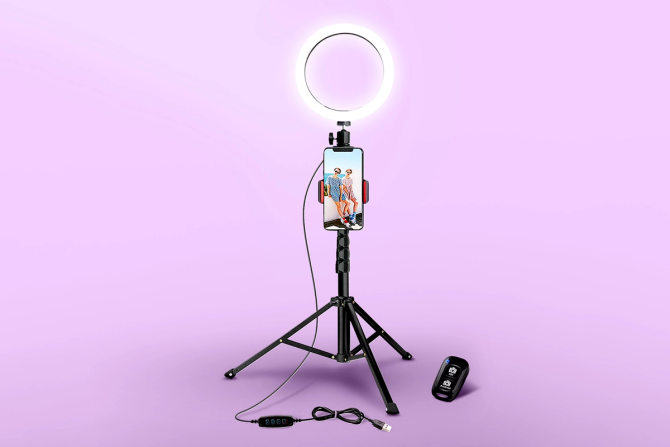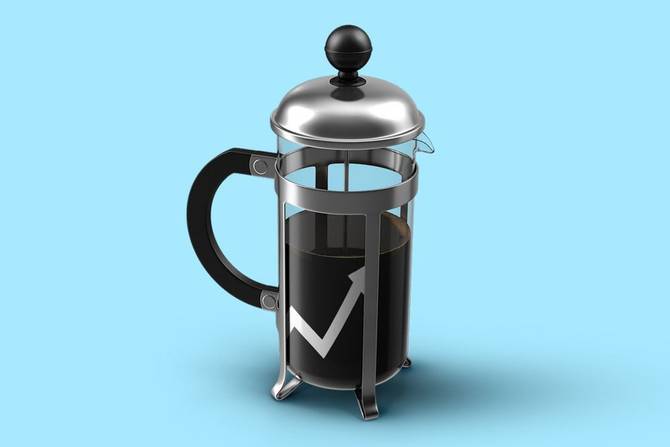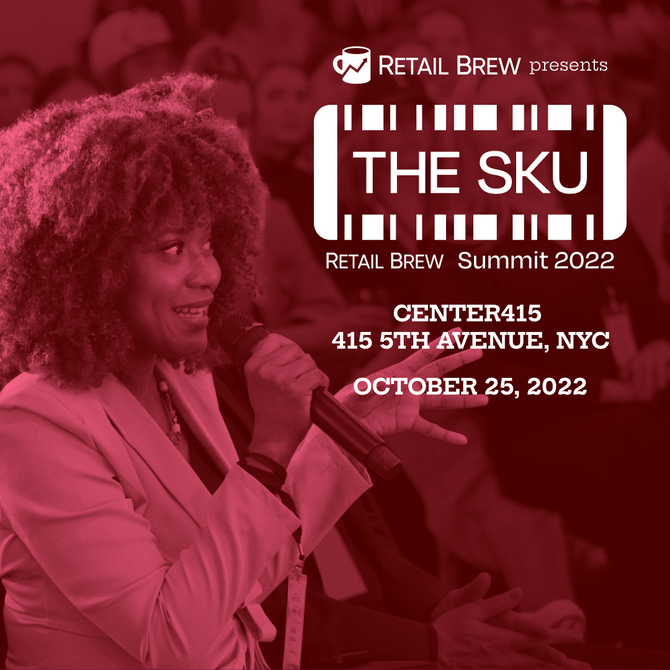Happy Wednesday. If you’re in the mood to procrastinate learn more about audio marketing today, tune into our Twitter Spaces at 2pm ET. Marketing Brew’s Alyssa Meyers will be chatting about podcast advertising, sonic branding, and more.
In today’s edition:
—Alyssa Meyers, Phoebe Bain
|
|
Grant Thomas
It’s been more than 40 years since the release of Caddyshack, which follows several country-club members and their caddies as they golf and socialize. (Also, Bill Murray hunts a gopher.)
Sure, they have their differences, but the vast majority also have something in common: they’re white men.
These days, golf looks a little different than it did in the Caddyshack days: 66% of Americans believe the sport is becoming more inclusive, while nearly seven in 10 (69%) said it’s becoming more diverse, according to a survey of 2,013 US adults conducted by Marketing Brew and the Harris Poll last month.
-
Still, the sport has a well-documented history of racism and sexism, and while nearly one-quarter of respondents (23%) said they play at least occasionally, men and those with high total household incomes (equal to or higher than $100,000 before taxes) are among the groups that play the most.
 Looking ahead: While there’s still work to be done, the sport is attracting new players, thanks in part to emerging golf brands that are focusing more on creating fun, accessible experiences than perpetuating old-fashioned trends like plaid knickers or pom-pommed hats. Looking ahead: While there’s still work to be done, the sport is attracting new players, thanks in part to emerging golf brands that are focusing more on creating fun, accessible experiences than perpetuating old-fashioned trends like plaid knickers or pom-pommed hats.
Puff, puff, putt
Traditional golf is still an option, but there’s also a host of modern-era golf brands looking to attract those who want a different experience.
- Pro skater Jack Fardell teamed up with five of his friends from Australia to start Walker Golf Things in June. The brand sells “things you want to wear to the course and the pub,” according to its website, while also aiming to “show off Australian golf,” Fardell told Marketing Brew.
- “It’s not as elitist as it is in the US,” he said. “Here, you’ve got expensive memberships and crazy country clubs that are super private, hard to get into, and in Australia, it’s more like you go down to your local club and you can join for a reasonable price.”
Other golf brands like Topgolf and Five Iron are also trying to make the game seem less stuffy. Continue reading here.—AM
|
|
|
If you’re thinking, “Oh, hey Snapchat, it’s been a while”—you’re actually in the minority. Snapchat’s platform has soared, reaching more than 99m daily users in North America and 347m daily users in the world.*
And it happened fast. Snapchat added 54m daily users in just one year. The app now reaches over 90% of Gen Z and over 75% of all millennials in the US. And it’s not just young people, either: More than HALF of Snapchatters are older than 24 in the US.**
That’s a massive reach, and your brand can tap right into this booming audience by leveraging the immersive power of Snapchat’s camera. 250m Snapchatters engage with AR daily, and AR leads to a 94% higher conversion rate, according to Shopify.
Marketers can also use goal-based bidding and Snapchat’s unique suite of video ad products to foster compelling, full-funnel results. PS: Across CPG, Snap drove an ROI on average 1.78x as much as the total media average.*** Wins on wins on wins.
Become a Snapchat marketing pro.
|
|
Ian McKinnon
The good news: Quitting your day job to become an influencer as a get-rich-quick scheme might be overrated. According to a survey of more than 1,700 creators from influencer marketing platform Aspire, only 4.3% of creators earn six figures or more a year.
The bad news: That could potentially be at least 13 million creators, as there are now about 303 million creators in nine major markets globally, per Adobe. 
And that wasn’t all the company’s survey found.
-
55.2% of those polled said they increased their rates over the past six months (don’t make us say we told you so).
- And 64% said they’ve turned down campaigns over the past year “due to a misalignment between the brand’s values and their own.”
The number one thing creators want from brands…Is more creative freedom, according to the survey.  “This isn’t a game of control, as much as I think that makes brands uncomfortable,” Anand Kishore, Aspire’s founder and CEO, told Marketing Brew. “This isn’t a game of control, as much as I think that makes brands uncomfortable,” Anand Kishore, Aspire’s founder and CEO, told Marketing Brew.
He added that, although guidelines are of course necessary, trying to steer a creator’s output somewhat “defeats part of the purpose” of working with creators for authentic content.
+1: Though 74% of respondents said they’re “very willing” to partner with companies that are “committed to sustainability,” only ~15% who do sustainability-related work said they would charge a lower rate for it.—PB
|
|
|
Improve your (in)fluency. Seems like everyone’s an influencer these days, so choosing the right social media stars to market your biz can be tough. This ebook by impact.com on managing influencers is here to help. Beef up on best practices for utilizing influencers to maximize your ROI right here.
|
|
Francis Scialabba
There are a lot of bad marketing tips out there. These aren’t those.
Privacy, please: Read why a “fragmented privacy landscape” is having an effect on marketers in this Q&A with a Gartner analyst.
From the source: This guide from Meta outlines how to make impactful Reels ads, partner with creators on IG, and more.
Tweet like a pro: How to use Twitter’s Advanced Search to see what’s working and up your social game.
|
|
Are you a marketer working in and around the retail industry? If so, we want you to come network and engage with top retail brands at our upcoming Retail Brew Summit: The SKU.
The SKU is a live, in-person event taking place next month in NYC. In just one day away from your desk, you can expand your professional network, gain perspective from leaders at top retail brands such as Crocs and Kroger, and head home with strategic insights that could help reduce your brand’s carbon footprint, increase brand awareness and affinity, and much more.
Tickets are only $599 for a limited time. Let’s get you to The SKU!
Register now.
|
|
-
Meta took down two networks in Russia and China that were operating “covert influence operations.”
-
Pfizer is using NFL games to promote its Covid vaccines.
-
M&M’s has added “Purple” to its cast of candy characters, its first addition in a decade.
-
Pusha T makes fun of McDonald’s McRib in a campaign for Arby’s.
-
Morning-after pill brands are using TikTok and loud colors in an attempt to reach younger consumers.
|
|
Stats: TikTok: $92 million. Google: $100 million. Snap: $35 million. Meta: $650 million. These are the amounts tech companies have paid to settle lawsuits in Illinois. Read why it keeps happening here.
Quote: “Oh, the crisp sound of the Velcro latch, the sweet tang of new plastic! And the indelible images of laser beams, planets, the California Raisins, neon rainbows, musical notes, kittens and unicorns. Why did this product, with its wide range of designs, capture our generation’s imagination?”—Jess deCourcy Hinds wrote an ode to the Trapper Keeper. Now that’s brand affinity.
Read: “TikTok Seen Moving Toward US Security Deal, but Hurdles Remain” (the New York Times)
|
|
Catch up on a few Marketing Brew stories you might have missed.
|
|
|
✢ A Note From Snapchat
*Snap Inc Q2 2022 Earnings
**Data from Snapchat Ads Manager as of August 30th, 2022
***Source: Nielsen Compass Benchmarks Category - Total CPG, Time period: Rolling 104 weeks ending Q3’21,
Media Types: Total Media, Snap, Total Social (includes Snap), Digital (Display, OLV, Social, Search), TV, Print, Radio. Total Media = TV, Digital, Print, Radio, OOH. Digital = Display, OLV, Social, Search.
|
|
|
Written by
Alyssa Meyers, Phoebe Bain, and Ryan Barwick
Was this email forwarded to you? Sign up
here.
|
ADVERTISE
//
CAREERS
//
SHOP
//
FAQ
Update your email preferences or unsubscribe
here.
View our privacy policy
here.
Copyright ©
2022
Morning Brew. All rights reserved.
22 W 19th St, 4th Floor, New York, NY 10011
|
|









